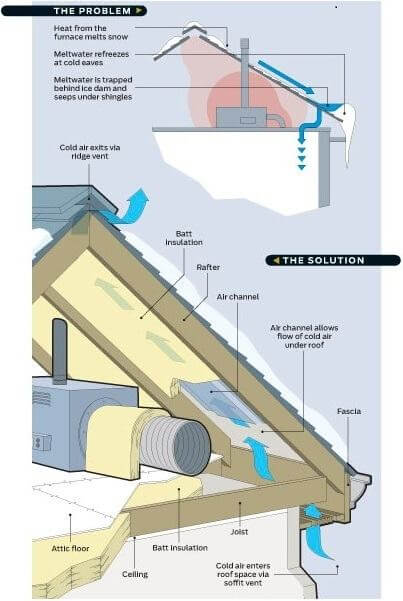The cold season brings snow-packed roofs across the country and with snow melt can come damaging ice dams. Without properly insulated attics, however, homeowners could find themselves with an ice dam upstairs. Heat from attic melts snow on roofs and the melted water pools and gets in the house. Here are some tips on how to avoid these frosty formations and what to do if they appear.
What is an Ice Dam?
An Ice Dam is a ridge of ice that forms at the edge of a roof and prevents snow (water) from draining off the roof. The water that backs up behind the dam can leak into a home and cause damage to walls, ceilings, insulation and other areas. Ice dams can be prevented by controlling the heat loss from your home.
Long-Term Action-Make the ceiling air tights so no warm, moist air can flow from the house into the attic space
-After sealing air leakage paths between the house and attic space, consider increasing the ceiling/roof insulation to cut down on heat loss by conduction
-Natural roof ventilation can help maintain uniform roof temperatures
Prevention
-Don’t heat the roof, keep it cold. The best way to maintain low temperatures is by ensuring adequate insulation and sealing gaps that let warm air pass into the attic from the house
-Attic needs to be well-ventilated, where cold air is introduced into the attic and heated air escapes rapidly
-If gable and ridge vents do NOT generate sufficient air movement to dissipate the heat, you will need a motorized vent at one end of the attic to exhaust the heat and an adequately sized vent to draw cold air in
-Proper new construction practices begin with following or exceeding the state code requirements for ceiling/roof insulation levels
-Absolutely necessary practice is to contract, 100% effective air barrier through the ceiling
-Recessed lights, skylights, complicated roof designs and heating ducts in attics will all increase the risk of ice dam formation
